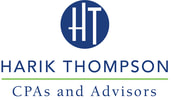|
The National Flood Insurance Program was created by Congress in 1968 to help property owners financially protect themselves. The program offers flood insurance to homeowners, renters and business owners if their community participates in it, and remains the main source of flood insurance in the United States. The NFIP is administered by FEMA, which works closely with more than 80 private insurance companies. Although the government administers the program, consumers purchase the insurance through private property and casualty insurance agents. Rates are set nationally and don't differ from company to company or agent to agent, so there's no need to price shop. However, insurers do have to look at the details of your situation when writing a policy. Rates depend on many factors, including — date and type of construction of your home or business, along with your building's level of risk.
Building coverage includes:
Contents coverage includes:
The two most common reimbursement methods for flood claims are replacement cost value (RCV) and actual cash value (ACV). The RCV is the cost to replace damaged property and is reimbursable to owners of a single-family primary residence insured to within 80 percent of the building's replacement cost. All other buildings and personal property contents are valued at the ACV. The ACV is the RCV at the time of loss minus physical depreciation. Personal property is always valued using the ACV. Homes and buildings in high-risk flood areas with mortgages from federally regulated or insured lenders are required to have flood insurance. In high-risk areas, there is at least a one-in-four chance of flooding in a 30-year mortgage time frame. Homes and businesses located in moderate-to-low-risk areas that have mortgages from federally regulated or insured lenders are typically not required to have flood insurance. Even though flood insurance is not federally required, anyone can be financially vulnerable to floods. People outside mapped high-risk flood areas file more than 20 percent of all NFIP flood insurance claims and receive one-third of federal disaster assistance for flooding. When it's available, disaster assistance (separate from insurance) is typically a loan you must repay with interest. More than 22,000 communities have implemented floodplain management measures and participate in the NFIP. Just a few inches of water from a flood can cause tens of thousands of dollars in damage. From 2010 to 2014, the average residential flood claim amounted to more than $39,000. The average flood insurance policy premium is about $900 per year. Costs vary depending on how much insurance is purchased, what it covers and the property's flood risk. Typically, there's a 30-day waiting period from date of purchase before your policy goes into effect. So don't wait for a bad forecast before running out to buy flood insurance. Comments are closed.
|
Newsletter articles are posted every 2 weeks. If you would like to have our e-newsletter delivered directly to your inbox, please sign up. Your information is confidential; you can unsubscribe at any time. Subscribe. Categories
All
|
Proudly powered by Weebly

 RSS Feed
RSS Feed